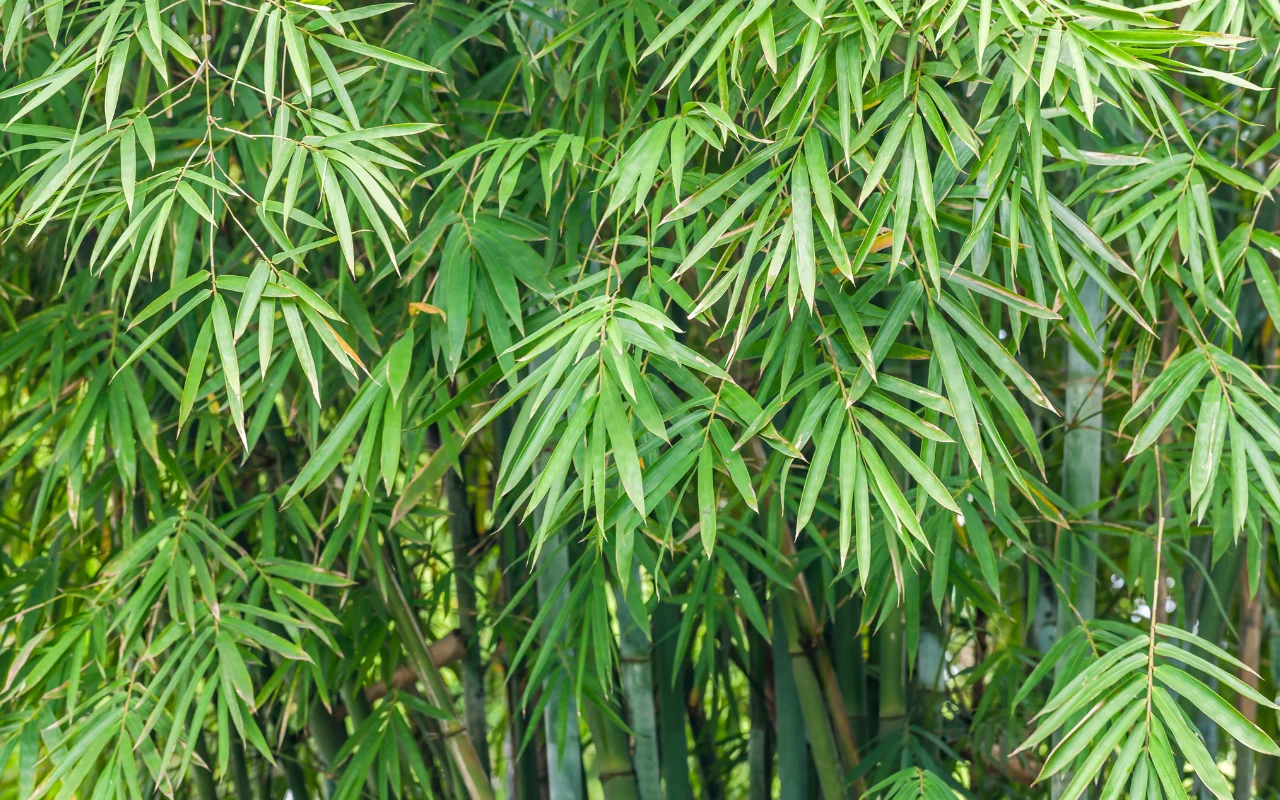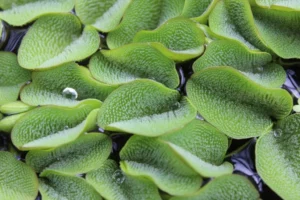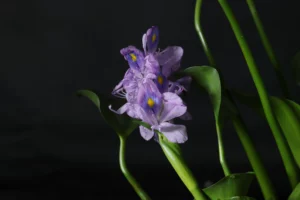Bamboo, a versatile and fascinating plant, is significant in human culture and the natural world. Known for its rapid growth and sustainability, bamboo is used in various industries and is vital in environmental conservation. To appreciate bamboo fully, it is essential to understand its scientific background, main families, life cycle, and numerous applications.
Scientific Classification of Bamboo
Scientifically, bamboo belongs to the kingdom Plantae and the order Poales, which includes grasses. It falls within the family Poaceae, commonly known as the grass family, and the subfamily Bambusoideae, specifically comprising bamboo. Bambusoideae has three primary tribes: Bambuseae, Arundinarieae, and Olyreae.
The tribe Bambuseae is the most extensive and diverse, encompassing tropical and subtropical regions. Notable genera within this tribe include Bambusa, Dendrocalamus, and Phyllostachys. These species are often characterized by their robust and woody nature. In contrast, the Arundinarieae tribe consists of temperate bamboos, found mainly in cooler regions. Genera such as Arundinaria and Chimonobambusa are common representatives of this group. Lastly, the Olyreae tribe comprises herbaceous bamboos, which are generally smaller and less woody. Examples include the genera Olyra and Pariana.
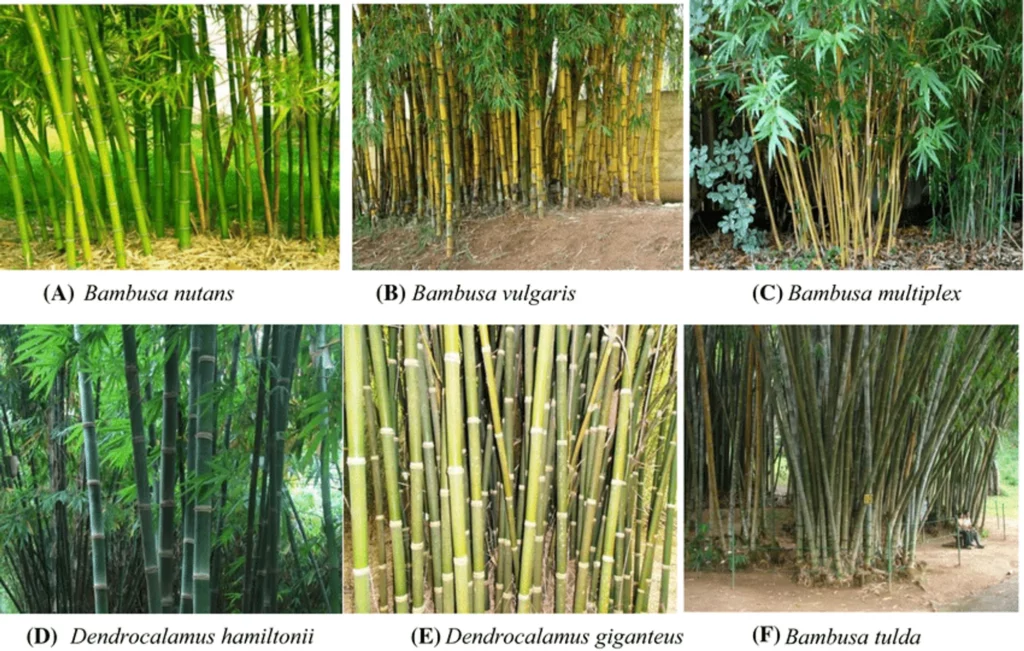
The life of Bamboo
The life cycle of bamboo is unique and can be divided into several distinct stages. It begins with seed germination, a crucial phase for establishing a new bamboo plant. Although bamboo seeds are rarely produced, they play a vital role in the propagation of the species. Following germination, the plant develops rhizomes, which are underground stems. These rhizomes produce new shoots and roots, allowing the bamboo to form dense clumps or groves. The next stage, shoot emergence, is particularly remarkable for its rapid growth. Bamboo shoots can reach their full height within just a few months, showcasing one of the plant’s most extraordinary characteristics.

As the bamboo culms (stems) mature, they undergo a process known as culming. During this stage, the culms harden and develop nodes and internodes, which contribute to the bamboo’s structural strength. The final stage in the bamboo life cycle is flowering and seeding. Flowering is a rare event that occurs at intervals ranging from several years to over a century, depending on the species. After flowering, many bamboo species produce seeds and then die, a phenomenon known as monocarpic or semelparous.
Living with Bamboo
Bamboo’s versatility is evident in its wide range of uses. In construction, bamboo is a popular building material, especially in Asia. Its strength and flexibility make it ideal for constructing houses, bridges, and scaffolding. Additionally, bamboo is widely used to produce furniture, utensils, musical instruments, and various handicrafts, valued for its aesthetic appeal and durability. Bamboo fibers are also used in the textile industry to create soft and breathable fabrics, often marketed as eco-friendly alternatives to conventional textiles.

Furthermore, bamboo shoots are a common ingredient in Asian cuisine, known for their nutritional value and crunchy texture. Bamboo shoots are low in calories and fat but high in dietary fiber, making them a healthy addition to the diet. They are packed with essential nutrients, including:
- Vitamin B6: crucial for brain health and metabolism.
- Vitamin E: an antioxidant that protects cells.
- Vitamin A: supports vision and immunity.
- Thiamine (Vitamin B1): essential for energy and nerve function.
- Riboflavin (Vitamin B2): supports energy and skin health.
- Niacin (Vitamin B3): aids digestion and skin health.
- Vitamin C: an antioxidant that boosts the immune system and skin health.
Besides vitamins, bamboo shoots offer minerals like potassium for heart and muscle health, and calcium for bones. They also contain traces of iron and magnesium. Known for their antioxidants, bamboo shoots help reduce oxidative stress and inflammation in the body.
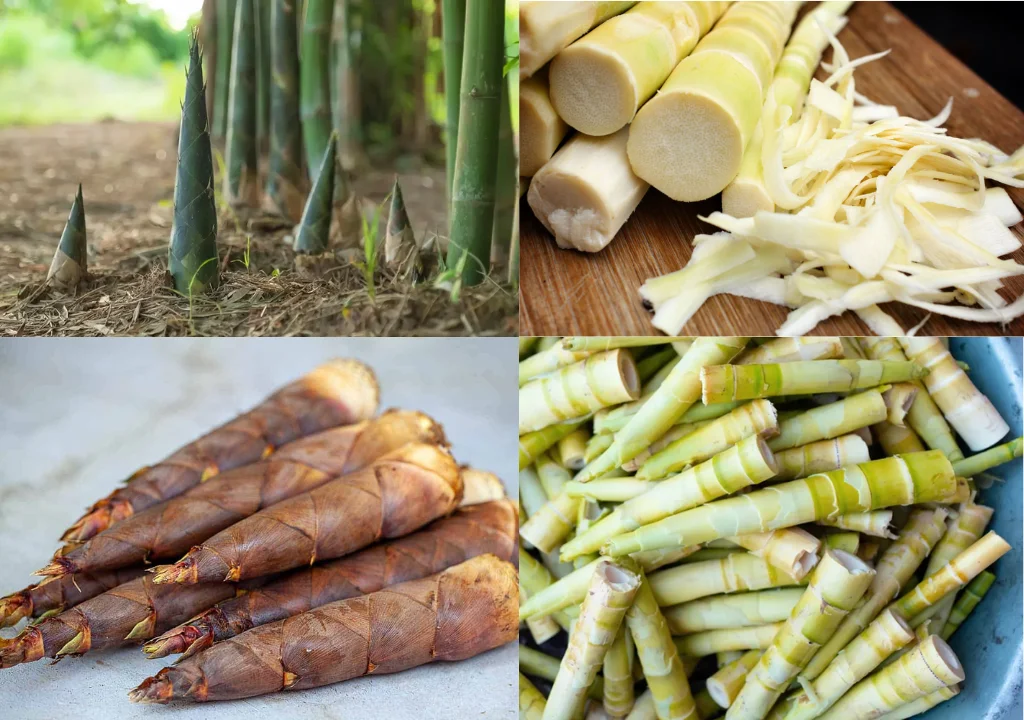
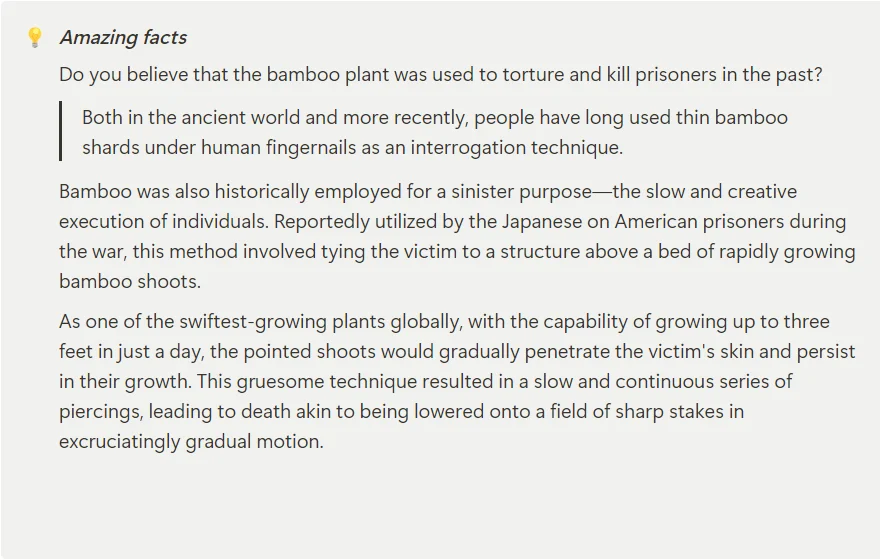
Bamboo for saving the world
Beyond its applications for human use, bamboo plays a significant role in environmental conservation. One of its notable contributions is carbon sequestration. Bamboo is highly effective at absorbing carbon dioxide from the atmosphere, helping mitigate climate change. Its rapid growth rate allows it to sequester more CO2 compared to many other plants. Additionally, bamboo’s extensive root system helps stabilize soil and prevent erosion, making it valuable in areas prone to landslides and soil degradation. Bamboo forests also provide habitats for various wildlife species, including the endangered giant panda, highlighting the importance of conserving these ecosystems to maintain biodiversity. As a fast-growing plant, bamboo is a renewable resource that can be harvested sustainably, offering an excellent alternative to timber and other materials contributing to deforestation.
Ultimately, bamboo is a remarkable plant with a rich scientific background and diverse applications. Its unique life cycle, from rapid shoot emergence to rare flowering events, adds to its allure. Bamboo’s versatility in human use, from construction to textiles, and its significant role in environmental conservation make it an invaluable resource. Embracing bamboo’s potential can lead to more sustainable practices and a healthier planet.
References
- Interesting, A.T. (2016). The 10 Most Horrifying Execution Methods Ever Devised. [online] All That’s Interesting. Available at: https://allthatsinteresting.com/worst-execution-methods/8 [Accessed 20 Jun. 2024].
- The Spruce. (n.d.). There Are Over 1,000 Types of Bamboo—Here Are 15 Common Types to Grow in Your Garden. [online] Available at: https://www.thespruce.com/types-of-bamboo-8550339 [Accessed 21 Jun. 2024].
- Emamverdian, A. et al. (2020) ‘Application of bamboo plants in nine aspects’, The Scientific World Journal, 2020, pp. 1–9. doi:10.1155/2020/7284203.
- Zheng, J. et al. (2021) ‘Which ornamental features of bamboo plants will attract the people most?’, Urban Forestry & Urban Greening, 61, p. 127101. doi:10.1016/j.ufug.2021.127101.

